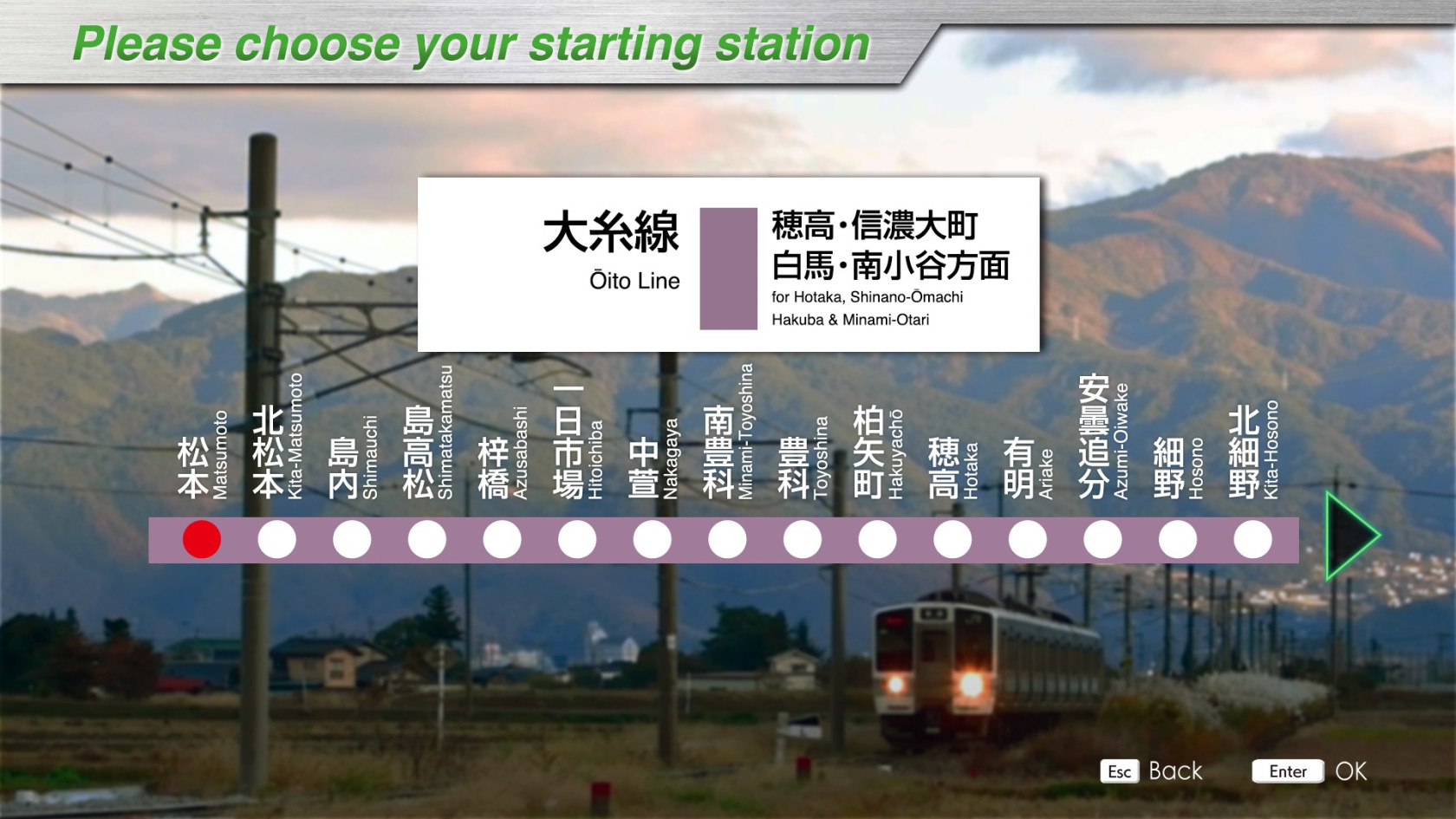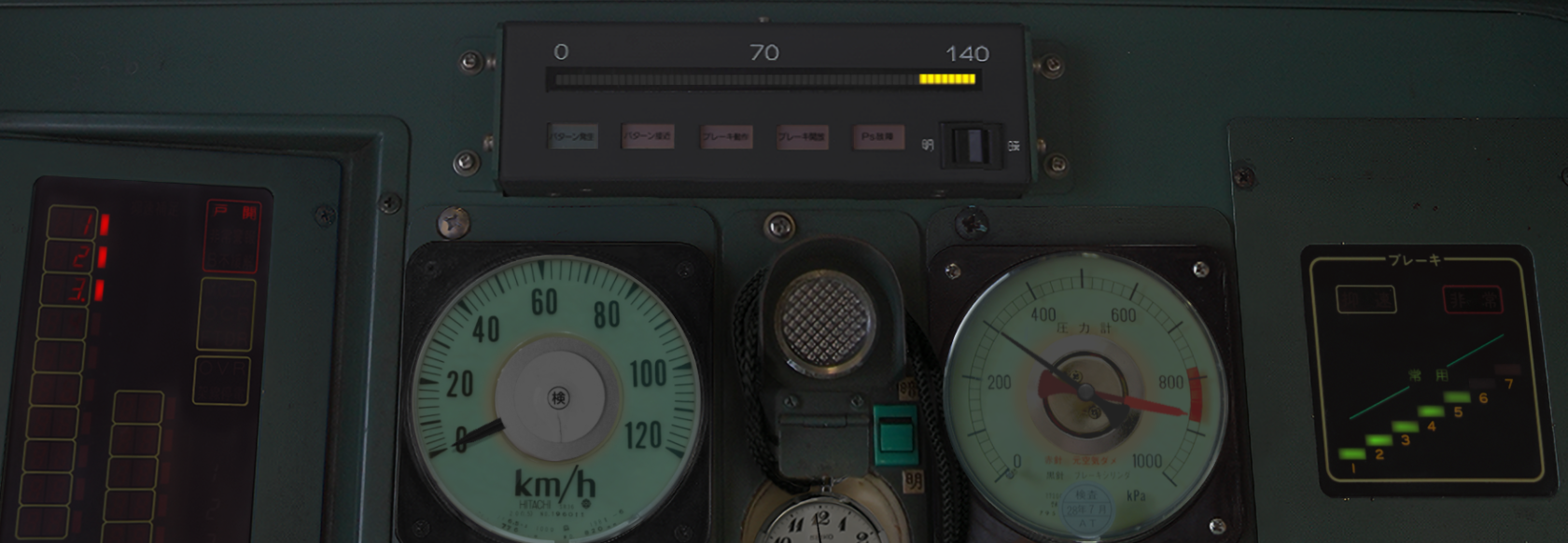Oito line
Introducing
The Oito Line is a 105.4 km long line connecting Matsumoto Station in Nagano Prefecture to Itoigawa Station in Niigata Prefecture. The 70.1 km route between Matsumoto Station and Minami-Kotani Station, which is under the jurisdiction of JR East, is well-known as a stop for customers visiting the mountain climbing and snow resort areas represented by Shinano-Omachi and Hakuba.
The "Super Azusa" limited express train runs directly from Shinjuku Station, and the line is also used as a commuter and school route in the Matsumoto area. From the driving scenery, you can experience the changing scenery of Shinshu from winter to spring with the magnificent snow-capped Northern Alps, cherry blossoms along the tracks, and rice paddies filled with water for the summer.
Key data
- Line length: 70.1 km
- Number of stations: 33
- Safety system: ATP-P / ATS-Ps
- Train model: 211 series
- Max speed:
- Matsumoto ~ Shinano Omachi : 95 km/h
- Shinano-Omachi ~ Minami-Otari : 85 km/h
- Max speed after signals:
- Reduced speed (green/yellow): 65 km/h
- Caution (yellow): 45 km/h
- Speed restriction (yellow/yellow): 25 km/h
- Routes:
- Matsumoto ~ Minami-Otari (5329M): "Local" - 3 cars - 33 stations - 70.1 km
- Matsumoto ~ Hotaka (3113M): "Local" - 3 cars - 11 stations - 16.2 km
- Matsumoto ~ Shinano-Omachi (3241M): "Local" - 3 cars - 20 stations - 35.1 km
The ATS-P section only covers the link between the first 2 stations (Matsumoto - Kita-Matsumoto). The rest of the line is ATS-Ps.
This train uses 2 levers: a power lever and a brake lever. This allows the brakes to be released only when the engines are powered up (and avoids backing up slightly). However, apart from the keyboard, the mouse and joysticks manage them as if there were only one lever.
Console detail
To the left of the console, we have car numbers and door opening status (red indicator = doors open).
In the center, we have :
- At the top, the ATS-Ps display, with the following indicators:
- Presence of a pattern (パターン発生)
- Pattern approach (パターン接近)
- Brake operation (ブレーキ動作)
- Brake release (ブレーキ開放)
- Ps failure (Ps故障)
- Bottom left, speed dial
- In the center, the lock indicator and a bit of the pocket watch
- Bottom right: brake cylinder pressure (black arrow) and compressed-air reservoir pressure (red arrow).
Note that the speed-limiting brake is located on the brake lever, between neutral and brake level 1.
Finally, on the far right, we have the brake level (with emergency brake indicator in red and speed limitation indicator in yellow).

At the top, next to the TIMS display is the ATS-P panel with the following indicators:
- P power supply (P電源)
- Pattern approach (パターン接近)
- Braking operation (ブレーキ動作)
- Brake release (ブレーキ開放)
- ATS-P
- Failure (故障)
TIMS screen (Train Information Management System)

The only screen available is the TIMS screen.
For the information we're interested in, at the top you'll find the current time, the current speed and the distance covered from the departure station.
This is followed by information on the train, the current station and the next 2 stations: station name, arrival time and departure time. Between each line is the journey time between stations.
Finally, there's the name of the next station where the train will stop, and the arrival time (useful when the next 2 stations are transit stations - which doesn't happen on this line).
Personal opinion
As the line is in ATS-Ps, driving on sight (without HUD indications) requires a great deal of concentration. It's also a line with many speed limits (particularly in the very mountainous second part). So it's not necessarily a line recommended for beginners.
But the big highlight of this line is the mountain scenery, where you can gradually see the Japanese Alps approaching. There's also the moment when you pass the Kisaki, Nakatsuna and Aoki lakes halfway along.
Useful links
Wikipedia : https://en.wikipedia.org/wiki/%C5%8Cito_Line
Driver's guide : https://docs.google.com/spreadsheets/d/1HrP2b5rDiIn5zPMiYtB48x8VqJmd1hYuBGAQKlmt3Q4/edit#gid=1281070402
Movie of the line: https://www.youtube.com/watch?v=U2RDr6F8eEg
Timetables (in japanese):
- Matsumoto ~ Minami-Otari (5329M) : https://docs.google.com/spreadsheets/d/1HrP2b5rDiIn5zPMiYtB48x8VqJmd1hYuBGAQKlmt3Q4/edit#gid=265436444
- Matsumoto ~ Hotaka (3113M) : https://docs.google.com/spreadsheets/d/1HrP2b5rDiIn5zPMiYtB48x8VqJmd1hYuBGAQKlmt3Q4/edit#gid=71938220
- Matsumoto ~ Shinano-Omachi (3241M) : https://docs.google.com/spreadsheets/d/1HrP2b5rDiIn5zPMiYtB48x8VqJmd1hYuBGAQKlmt3Q4/edit#gid=491050595


